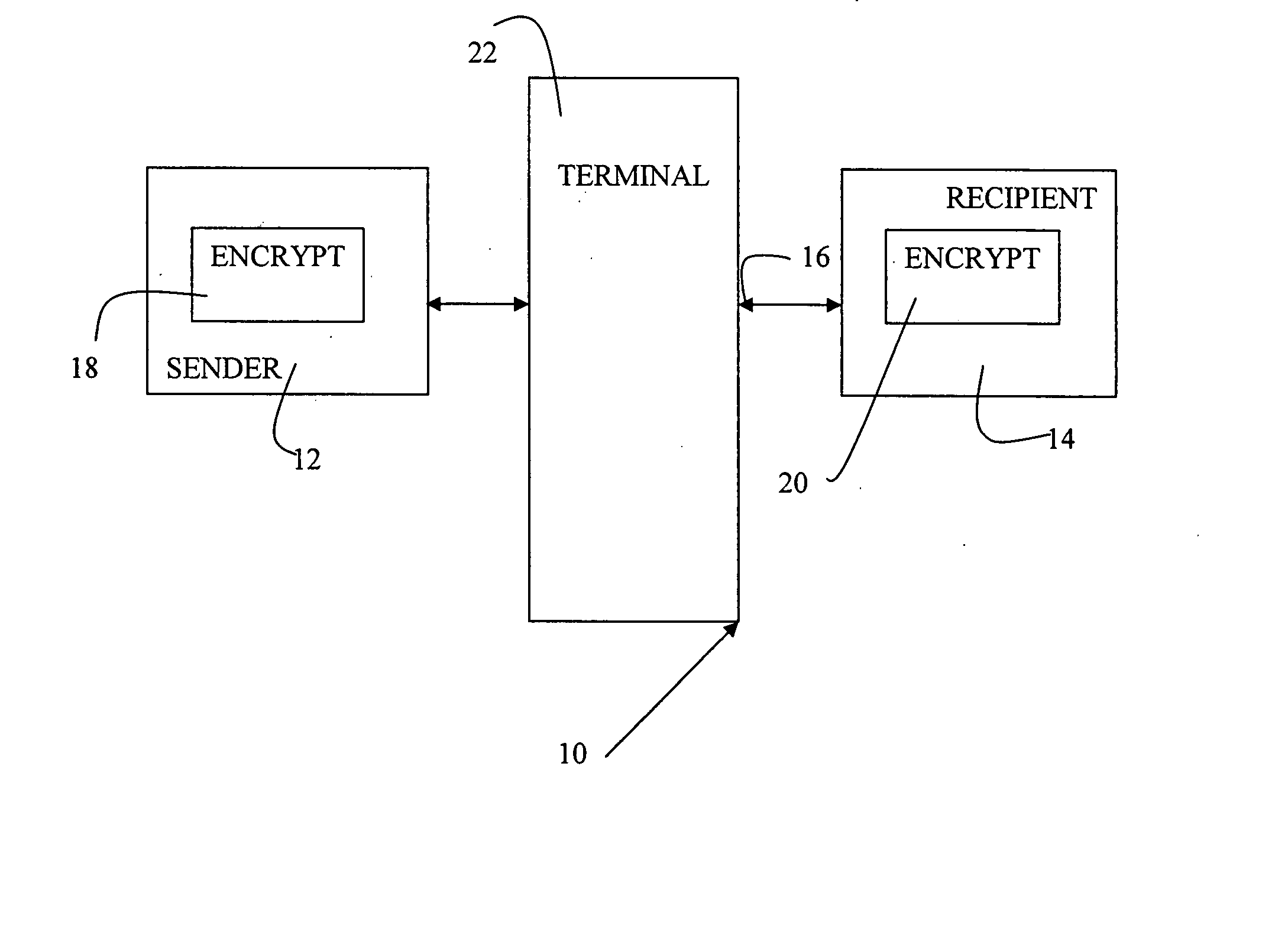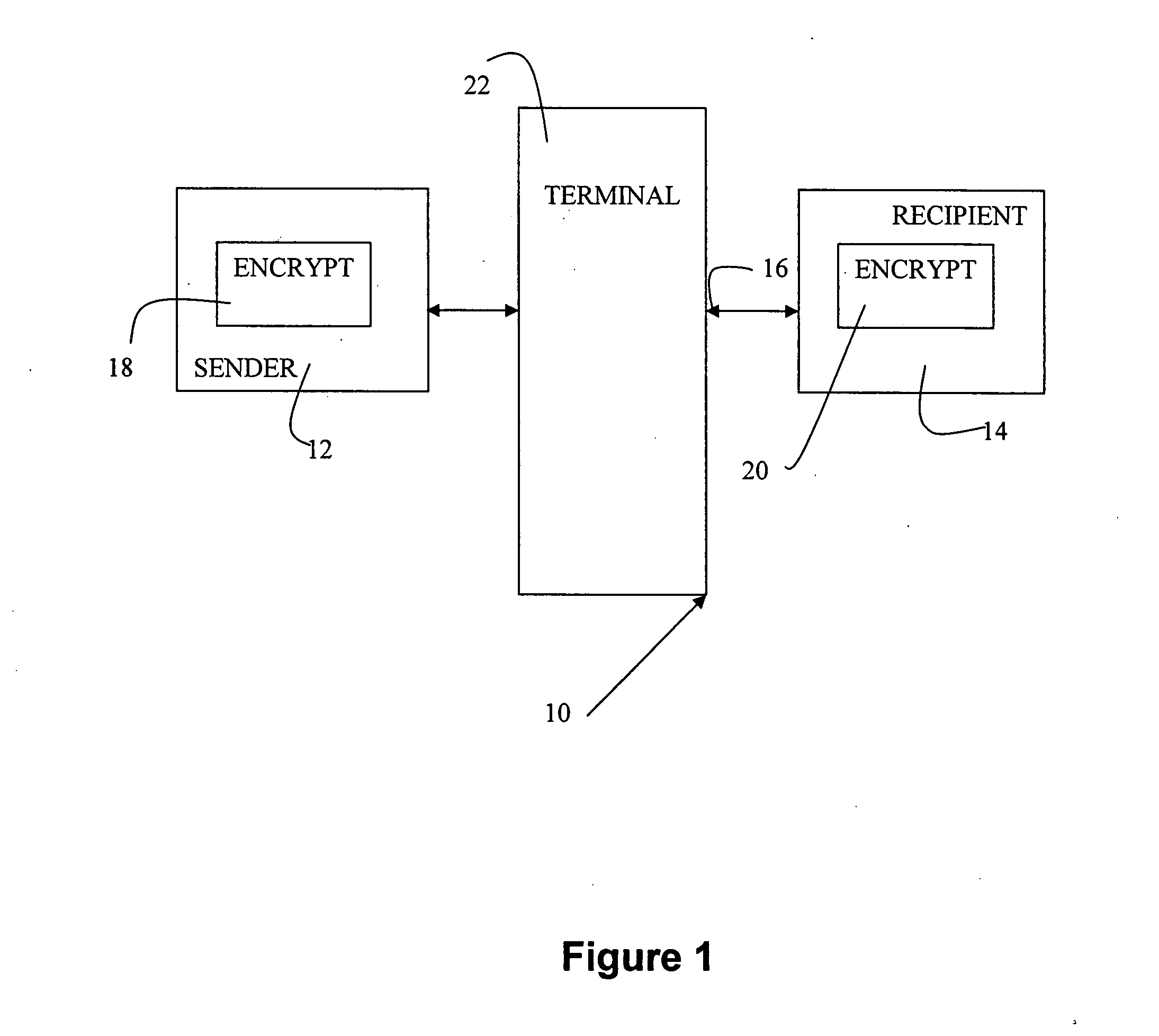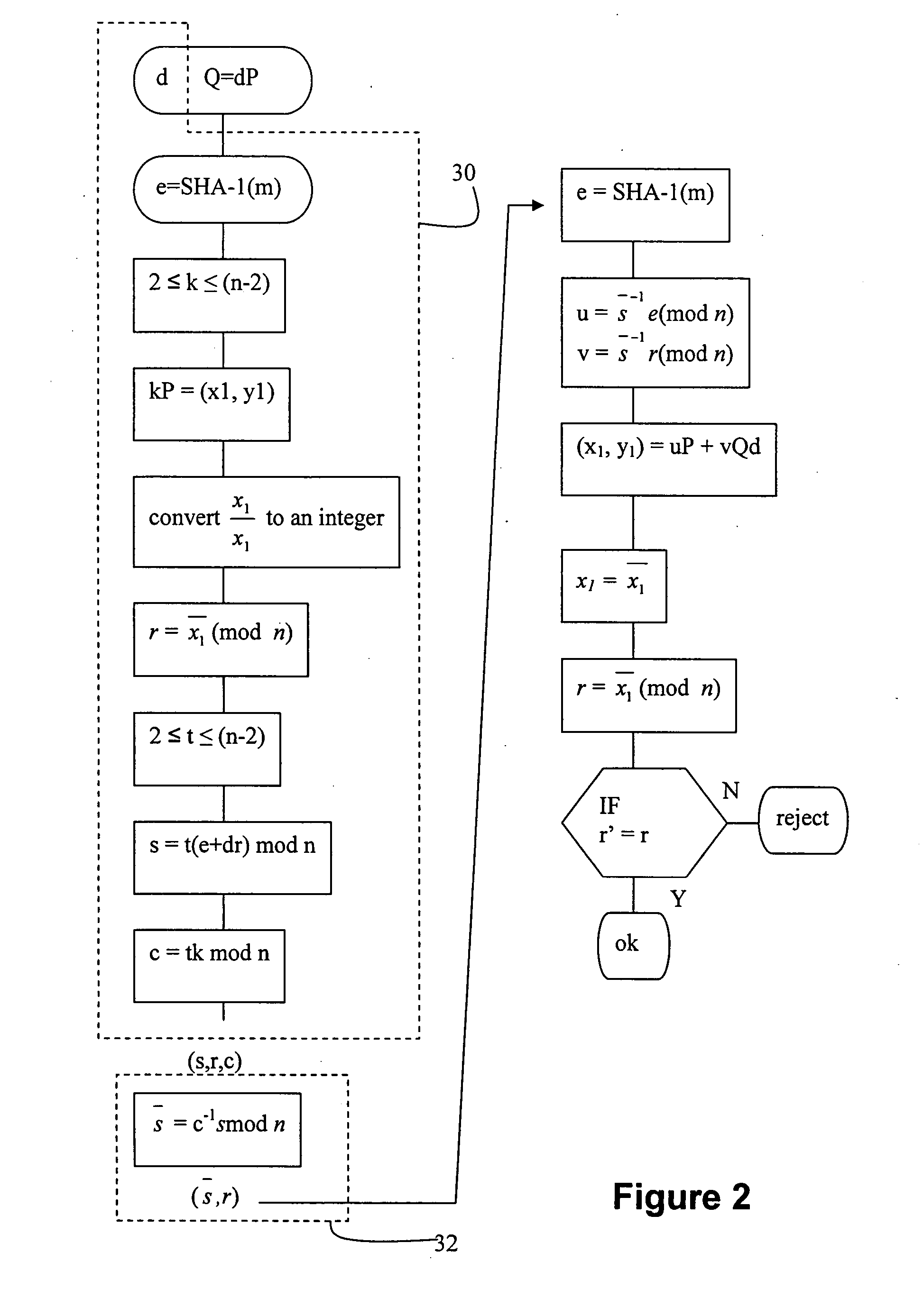Masked digital signatures
a digital signature and mask technology, applied in the field of mask digital signatures, can solve the problems of slow signature and verification, computationally intensive cryptosystems, and delay in the signature and verification process, and achieve the effect of slowing down the signature and verification process, and reducing the computational intensity of the computation
- Summary
- Abstract
- Description
- Claims
- Application Information
AI Technical Summary
Benefits of technology
Problems solved by technology
Method used
Image
Examples
Embodiment Construction
[0040] Referring therefore to FIG. 1, a data communication system 10 includes a pair of correspondents, designated as a sender 12, and a recipient 14, who are connected by a communication channel 16. Each of the correspondents 12,14 includes an encryption unit 18,20 respectively that may process digital information and prepare it for transmission through the channel 16 as will be described below. The sender is the party signing a message m to be verified by the recipient. The signature is generally performed in the encryption unit 18 and normally defines a secure boundary as indicated at 32. The sender could be a ‘smart card’, a terminal or similar device. If for example the signor is a ‘smart card’, it generally has limited processing power. However, the ‘smart card’ is typically used in conjunction with a terminal 22 which has at least some computing power. The ‘smart card’ is inserted into a terminal 22 which then forwards digital information received from the ‘smart card’12 alon...
PUM
 Login to View More
Login to View More Abstract
Description
Claims
Application Information
 Login to View More
Login to View More - R&D
- Intellectual Property
- Life Sciences
- Materials
- Tech Scout
- Unparalleled Data Quality
- Higher Quality Content
- 60% Fewer Hallucinations
Browse by: Latest US Patents, China's latest patents, Technical Efficacy Thesaurus, Application Domain, Technology Topic, Popular Technical Reports.
© 2025 PatSnap. All rights reserved.Legal|Privacy policy|Modern Slavery Act Transparency Statement|Sitemap|About US| Contact US: help@patsnap.com



